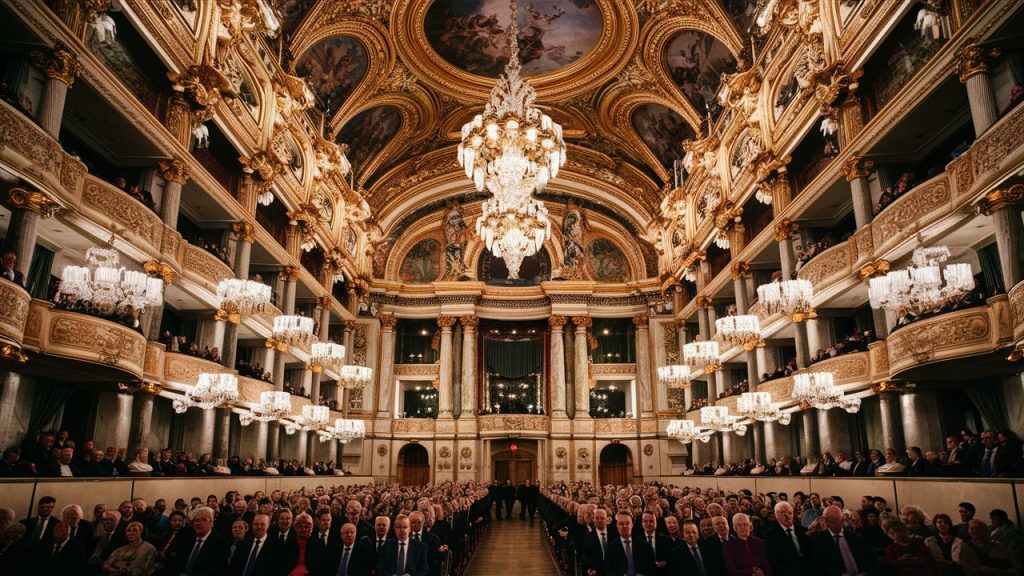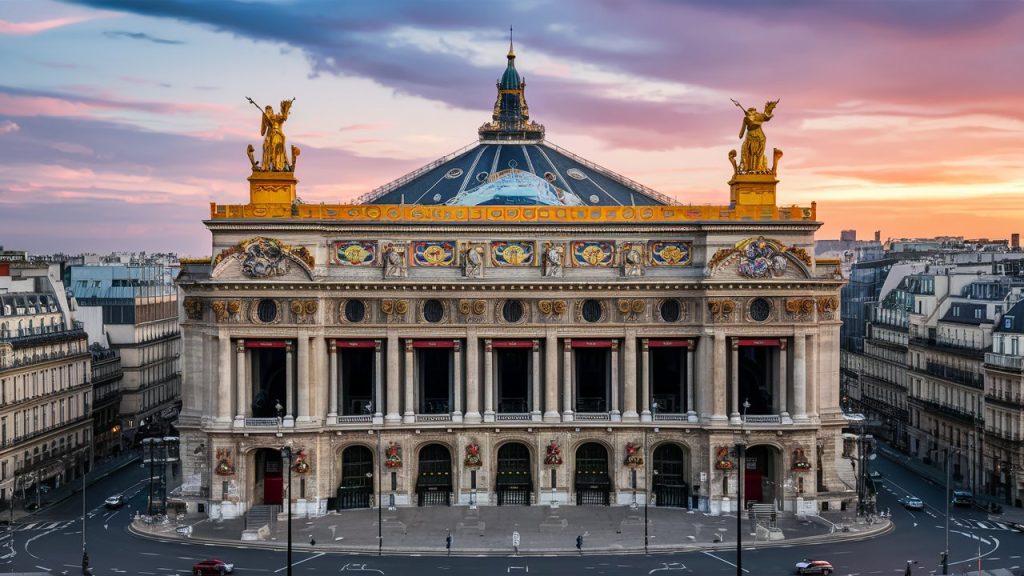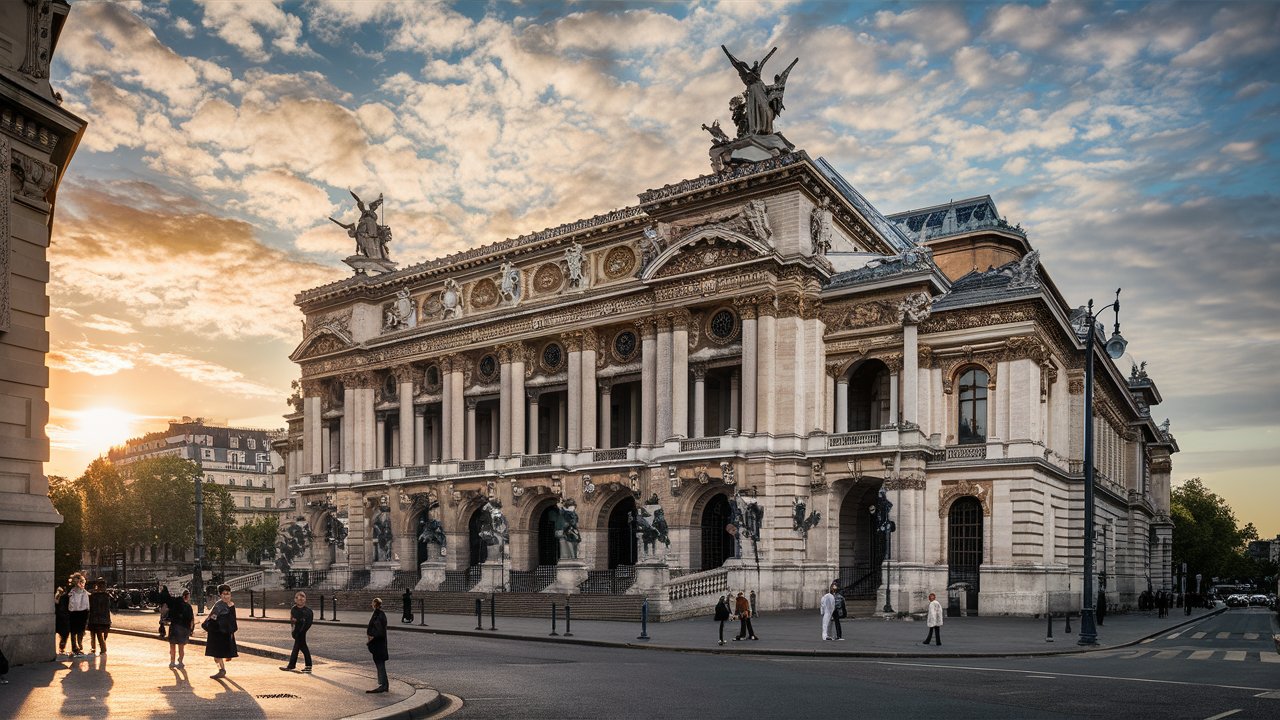Table of Contents
Is the Opera in Paris by Garnier 2nd Empire style? This question leads us to one of the most fascinating architectural wonders of the 19th century. The Paris Opera House, designed by Charles Garnier, symbolizes grandeur, luxury, and the artistic vision of its time. But does it truly embody the 2nd Empire style? This article will take you through its history, design, and hidden details to uncover the truth behind this iconic structure.
Understanding is the opera in Paris by Garnier 2nd Empire Style Architecture

What Defines 2nd Empire Style?
To answer the question, “Is the Opera in Paris by Garnier 2nd Empire style?” we must first understand what characterizes this architectural movement. The 2nd Empire style, which flourished in France during the reign of Napoleon III (1852-1870), is known for its opulence, grandeur, and eclectic mix of influences. It often features:
- Mansard Roofs: Sloped roofs with dormer windows add elegance to the structure.
- Heavy Ornamentation: Detailed carvings, cornices, and decorative elements display wealth and sophistication.
- Symmetry and Balance: A harmonious design with balanced proportions, reflecting order and grandeur.
The Influence of the 2nd Empire on Paris Architecture
The 2nd Empire style left an indelible mark on Paris, transforming the city’s appearance with wide boulevards, grand public buildings, and opulent private residences. This period saw the birth of architectural masterpieces that combined functionality with visual appeal. The Paris Opera House, often associated with this style, is a prime example of how architecture was used to reflect the power and glory of the Empire.
The Birth of the Paris Opera House
The Vision of Charles Garnier
Is the Opera in Paris by Garnier 2nd Empire style? To understand, we must delve into the mind of its creator, Charles Garnier. Garnier was an unknown architect when he won the competition to design the new opera house in 1861. His vision was bold: to create a building that would stand as a testament to French art, culture, and power. He sought to blend various architectural styles into one harmonious design, reflecting the eclecticism of the 2nd Empire.
The Construction and Challenges
The construction of the Paris Opera House was no easy feat. It began in 1862 and faced numerous challenges, including political turmoil, financial difficulties, and even the discovery of an underground lake. Despite these obstacles, Garnier remained committed to his vision, and the building was finally completed in 1875. The result was a structure that captured the imagination of all who saw it, embodying the spirit of the 2nd Empire.
Architectural Elements of the Paris Opera House
The Grand Facade
One of the most striking features of the Paris Opera House is its grand facade. But is the Opera in Paris by Garnier in the 2nd Empire style? The answer lies in its intricate design. The facade is adorned with statues, columns, and arches, all arranged in a symmetrical pattern that reflects the principles of the 2nd Empire style. The use of Corinthian columns, the lavish ornamentation, and the sense of balance all point to the influence of this architectural movement.
The Interior Splendor
Step inside the Paris Opera House, and you’ll be transported to a world of luxury and elegance. The interior is a testament to Garnier’s genius, with every detail carefully crafted to create a sense of awe. The grand staircase, with its sweeping curves and intricate railings, is a focal point of the design. Using gold leaf, marble, and rich fabrics throughout the building adds to the sense of luxury. Is the Opera in Paris by Garnier 2nd Empire style? The interior certainly reflects the grandeur and extravagance associated with this period.
Hidden Secrets of the Paris Opera House
The Underground Lake
One of the most mysterious aspects of the Paris Opera House is the underground lake beneath it. This hidden feature has inspired countless legends and famous stories like “The Phantom of the Opera.” But how does it relate to the question, “Is the Opera in Paris by Garnier 2nd Empire style?” The lake itself is not a direct reflection of the style but adds to the mystique and allure of the building, enhancing its reputation as a masterpiece of the 2nd Empire.
The Grand Foyer
The Grand Foyer is another hidden gem within the Paris Opera House. This long, elegant hall is lined with mirrors and chandeliers, creating a luxurious and timeless space. The design of the Grand Foyer, with its emphasis on light, reflection, and luxury, aligns perfectly with the principles of the 2nd Empire style. It’s a space that invites visitors to linger, admire the details, and soak in the grandeur of the building.
Also read: American Lit EOC Author’s Style: Discover the Joys of Engaging Storytelling
The Legacy of the Paris Opera House
A Symbol of French Culture
Is the Opera in Paris by Garnier 2nd Empire style? Beyond its architectural elements, the Paris Opera House has become a symbol of French culture and identity. It represents the artistic and cultural ambitions of the 2nd Empire, serving as a venue for some of the most important performances in French history. Its legacy extends beyond architecture, influencing the arts, music, and fashion.
Influence on Modern Architecture
The influence of the Paris Opera House can still be seen in modern architecture. Its blend of styles, attention to detail, and emphasis on grandeur have inspired countless buildings worldwide. Architects continue to study Garnier’s work, drawing lessons from his ability to create a cohesive design that still allows for creativity and innovation. Is the Opera in Paris by Garnier 2nd Empire style? Its lasting impact on architecture suggests it is a masterpiece of this period.
Is the Opera in Paris by Garnier 2nd Empire Style?

After exploring the history, design, and hidden secrets of the Paris Opera House, we return to the original question: Is the Opera in Paris by Garnier 2nd Empire style? The answer is a resounding yes. Charles Garnier’s masterpiece embodies the key elements of the 2nd Empire style, from its grand facade to its opulent interior. It reflects the spirit of an era that valued luxury, creativity, and artistic expression. The Paris Opera House is a testament to the enduring appeal of the 2nd Empire style, a symbol of a time when architecture was not just about building structures but creating works of art.
In sum, the Opera in Paris by Garnier is a shining example of 2nd Empire style architecture and a building that holds many secrets and stories. Its design reflects the grandeur and ambition of the 2nd Empire, while its hidden features add layers of mystery and intrigue. As you walk through its halls, you’re not just exploring a building; you’re stepping into a piece of history, a symbol of French culture, and a masterpiece of architectural design. That being said, when you inquire again, “Is the Opera in Paris by Garnier 2nd Empire style?” You’ll be aware of the solution and grateful for the magnificent secrets it conceals.




